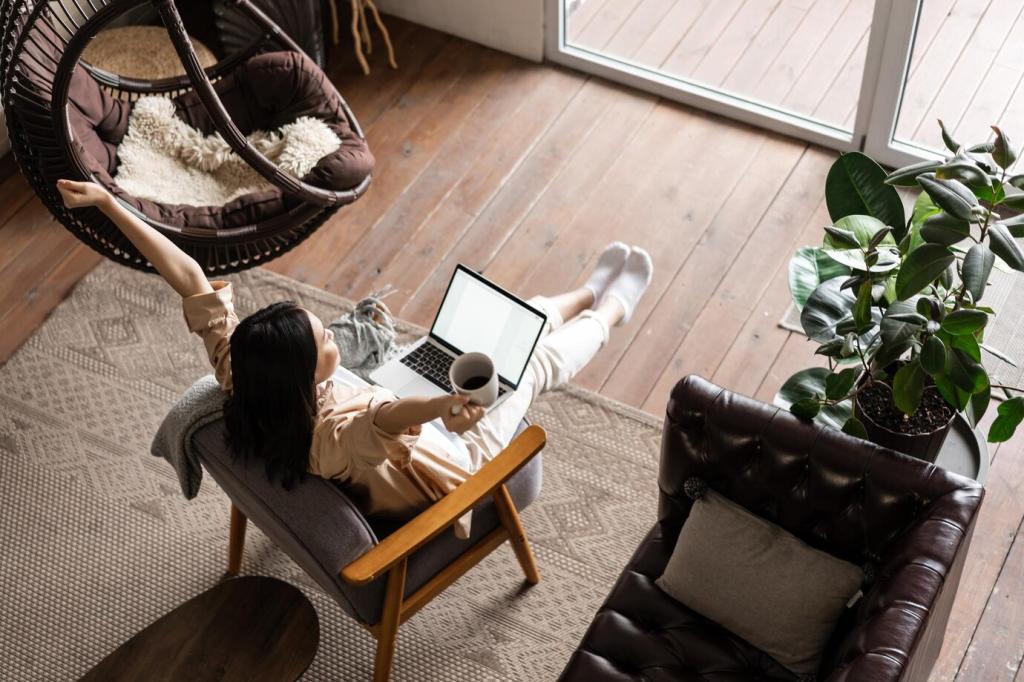Boundaries, Habits, and Distraction-Proofing
Open with two minutes of planning, then a playlist cue or candle that says, now we build. Close with a quick review, desk reset, and tomorrow’s top three. Rituals make momentum repeatable and stress lighter.
Boundaries, Habits, and Distraction-Proofing
Set quiet hours with your household, posting a simple door sign when you are on a call or deep sprint. Offer trade-offs—help afterward or shared breaks—to keep goodwill high and interruptions rare.









